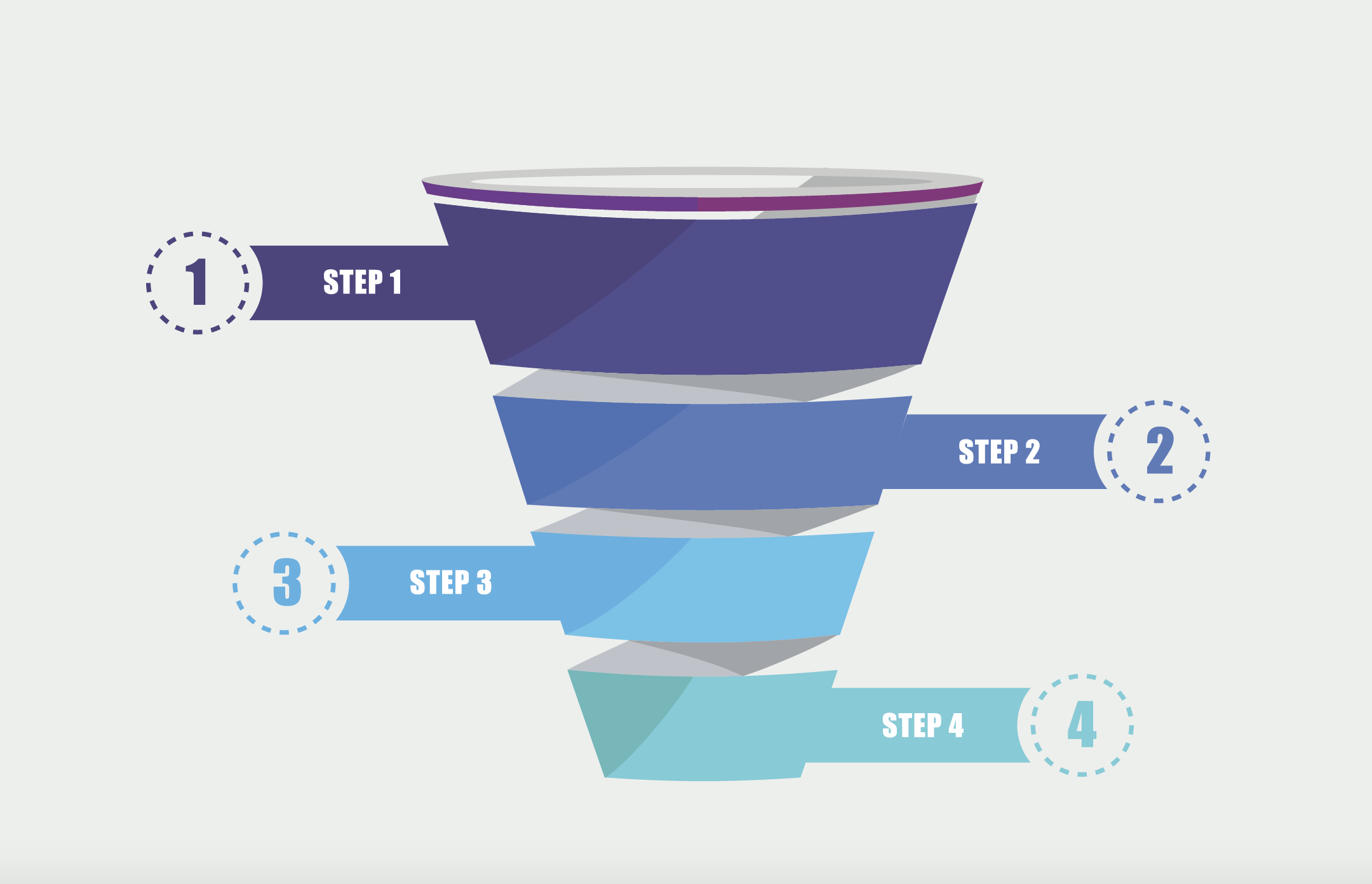
Conversion funnels measure the completion rates as your app users or customers move from one step to the next, in order to complete a series of steps you as the app developer view as important.
Most conversion funnels are related to a revenue-generating moment, which could be any combination of viewing advertisements, driving purchases, or upgrading to a subscription. But depending on your app’s business model, the conversion event might not directly generate revenue; but rather lead to deeper engagement, such as creating an account or signing up for an email list.
You would use a conversion funnel to understand where drop-off occurs along the funnel. For example:
- What is the user drop-off along each step?
- Are there points of friction?
- Can any steps be removed, redesigned, or simplified?
Types of Mobile Conversion Funnels
In Flurry Analytics, we support analysis on two kinds of conversion funnels: user conversion and repeated conversion.
User Conversion Funnels
An example of a user conversion funnel is launching the app for the first time, completing an onboarding process, or signing up for a subscription. Presumably a user would complete these steps one time only, but these steps might be integral to building engagement.
Repeated Conversion Funnels
Repeating conversion funnels can happen multiple times. For example, leveling up in a game, completing a purchase, or watching an advertisement.
How to Optimize Your App’s Conversion Funnel
To get started building a conversion funnel, you’ll need to integrate analytics into your mobile app. Flurry takes about 5 minutes for basic integration, but custom events set-up will allow you to measure the specific actions that users complete within your app to evaluate user engagement. Flurry offers 500 events per app with unlimited event parameters. Investing some time planning the events you want to measure, as well as determining an easy-to-understand naming convention will pay off in the long run. You can read our best practices for custom events here.
Step 1: Measure your existing conversion funnel
Once you have custom events in place to measure your conversion funnel, you are ready to identify opportunities to improve your users’ conversion along each step of the conversion funnel.
Step 2: Hypothesize opportunities to boost conversion rates
Obviously, this is dependent on your app, but once you’ve identified the steps that lead to drop off, you can hypothesize a few opportunities that might improve your conversion rates. Making incremental changes or running an A/B test will allow you to test each hypothesis individually to find areas for improvement. Push notifications can be a powerful resource to drive users back into the funnel. For example, if a user started the registration process but did not complete it, a simple push notification might nudge them to finalize their registration.
You also might identify opportunities to increase the number of customers entering your funnel. Perhaps you can move the all important first step to the home screen or even develop a persistent banner across all pages of your app.
Step 3: Test your Hypotheses
The key to optimizing your conversion funnel is careful, calculated tests. You don’t want to change your entire funnel in hopes that something might work; rather you should focus on one step at a time.
Even minor improvements along these user conversion funnels could result in increased retention and higher revenue per user. You can read more about how Flurry Analytics simplifies conversion funnel analysis. Get started today at www.flurry.com.